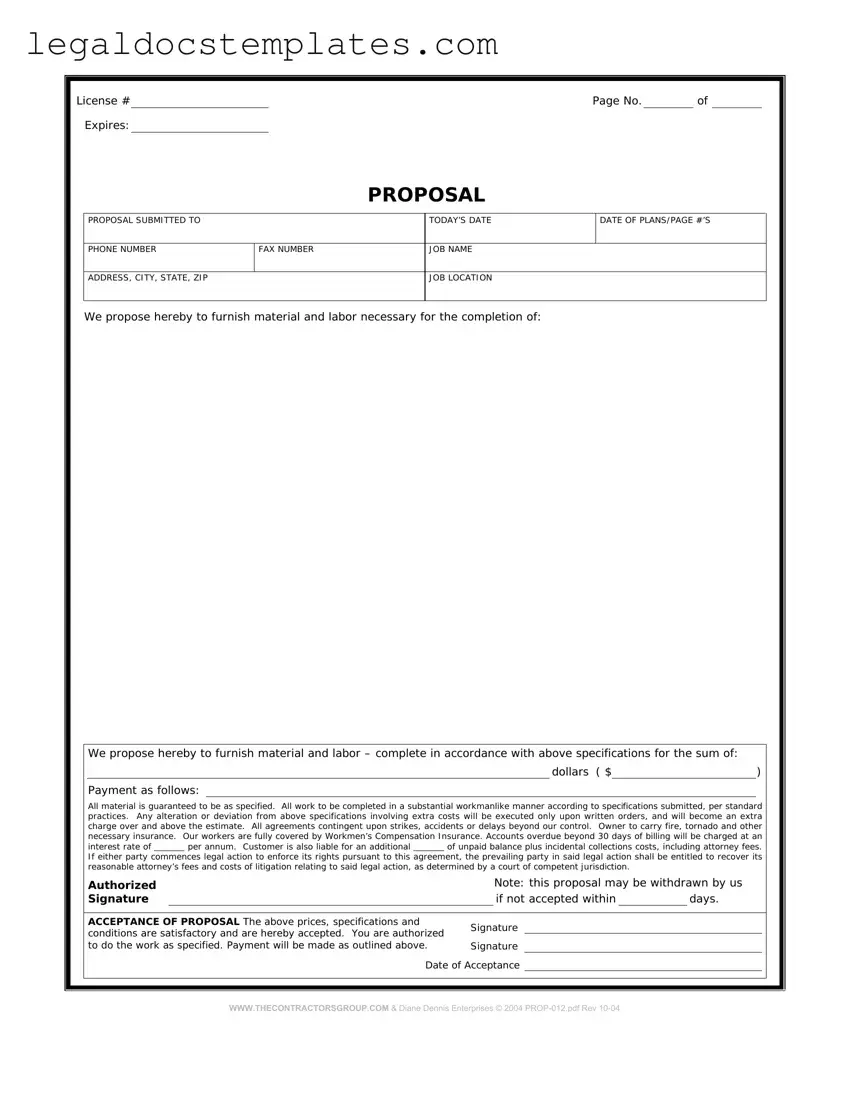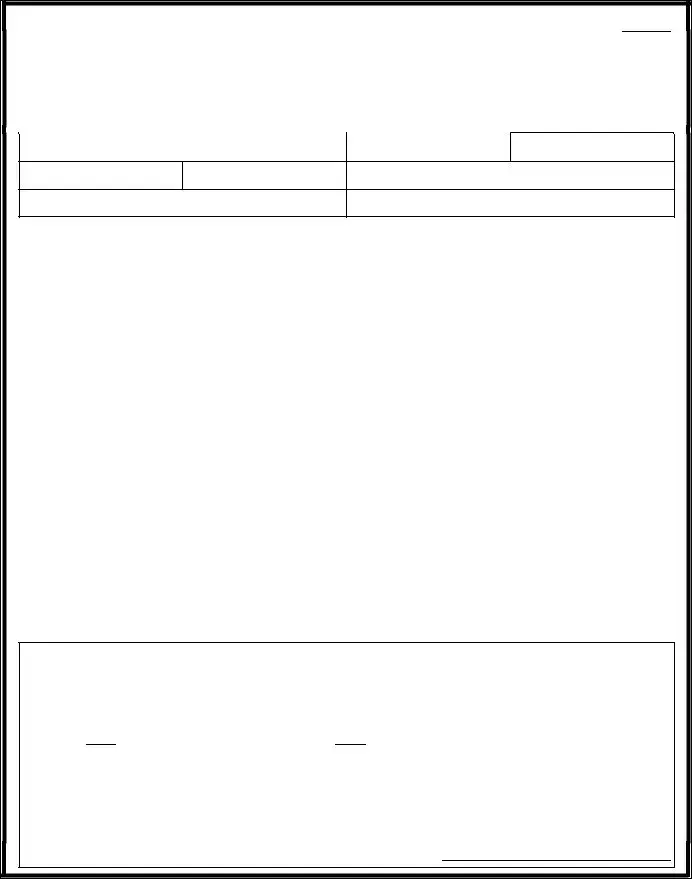A construction proposal form is closely related to a project bid template, which is used by contractors to submit a proposal to undertake a project. Both documents outline the scope of work, materials needed, labor, timelines, and costs involved. They serve as formal offers to complete a project under specified terms and allow for easy comparison between different contractors' proposals.
Similarly, a service contract agreement shares similarities with a construction proposal form. A service contract outlines the terms of service between a provider and a client, including responsibilities, timelines, payment schedules, and the scope of work. In essence, after accepting a construction proposal, the two parties might sign a service contract to formalize the agreement and specify the work's legal and financial aspects.
A quotation form is another document similar to a construction proposal form. Quotations are detailed breakdowns of the expected cost of goods or services. Like construction proposals, they provide potential clients with an estimate of how much a project will cost, including labor, materials, and other expenses. However, quotations are often shorter and less detailed than full proposals.
An invoice, while used at a later stage of the project, shares elements with a construction proposal form. Invoices are sent to request payment for services rendered or goods provided, detailing the work completed and the associated costs. A construction proposal can often serve as the basis for the final invoice, detailing the agreed-upon work and costs.
A Statement of Work (SOW) document is akin to a construction proposal in its purpose of defining project specifics. An SOW outlines the project's objectives, scope, milestones, deliverables, and timeframes. It's more detailed in defining how the project will be carried out, acting as a blueprint for the execution phase, similar to the role of a construction proposal.
A change order form also shares similarities with a construction proposal form. During a project, if there needs to be a modification in the scope of work, a change order form is submitted to outline these changes and their impact on cost and time. Like a construction proposal, it presents detailed information on specific aspects of the project, but it focuses on modifications to the original agreement.
A Request for Proposal (RFP) is a document that solicits proposals, often through a bidding process, from potential contractors or vendors. An RFP outlines the project specifications, requirements, and evaluation criteria. A construction proposal form responds to an RFP, adhering to its structure and requirements to propose a tailored solution to the project's needs.
An Architectural Proposal is similar but specific to design and architectural services. It details the vision, preliminary designs, materials, cost estimates, and project timeline. Like construction proposals, architectural proposals aim to present a comprehensive plan for review and acceptance by the client or stakeholders, highlighting creativity alongside feasibility.
A procurement contract is a formal agreement between a buyer and a seller outlining the purchase of goods, services, or works. It's similar to a construction proposal form in that it details the scope of work, delivery timelines, prices, and terms and conditions. However, a procurement contract is legally binding once both parties agree, moving beyond the proposal stage.
Lastly, the job estimate form shares common ground with a construction proposal form. Job estimates provide potential clients with an overview of the cost associated with a particular service or project. Both contain detailed breakdowns of costs, but a construction proposal is more detailed regarding the scope of work, project management, and timeline, moving towards a more formal engagement between parties.

